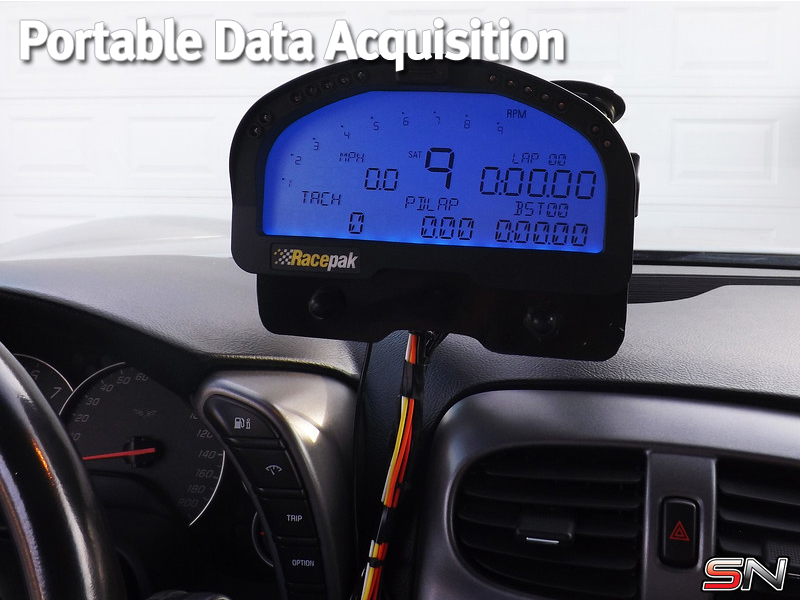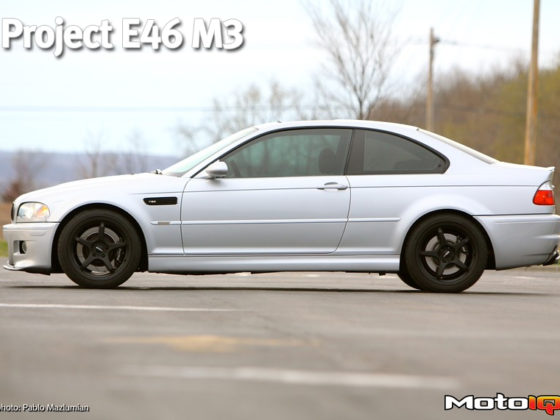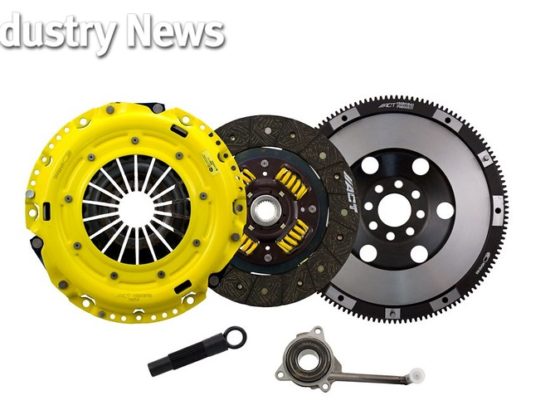Our partners over at the National Auto Sport Association (NASA) now have an online home for the great content of their Speed News magazine! NASA Speed News is full of race car tech, NASA news and NASA race coverage. Hope you enjoy this snippet from one of the NASA Speed News articles and that you'll spend some time on their site exploring. – MotoIQ
Toolshed Engineer – Portable Data Acquisition
by Rob Krider
Data. If you use it in racing, you understand why it’s a four-letter word. Data simply doesn’t lie. If you’re on an endurance racing team and you swear to the crew chief you’ve never shifted over 7,000 rpm, you better be telling the truth, because he is looking at a leaking head gasket and the information from a data acquisition system that says otherwise. 8,200 rpm isn’t 7,000 rpm and that will probably be your last adventure with that particular team.
But if you’re a reasonable person, who doesn’t pop the head gasket on every Honda powered car you’ve ever driven, then data is your friend. There is an enormous amount to be learned from data, especially when multiple people are driving the same car, like at the 25 Hours of Thunderhill. Well, let’s be clear, there was an enormous amount of data to learn from before the head gasket went.
For learning a new track, learning a new car, or vehicle setup, data is worth its weight in gold. With continuous lap time displays and predictive lap timing, you can push yourself on track, try things in different corners, and instantly know what works and what doesn’t. Then, after a session is over, you can download the data, learn from mistakes and overlay it for really cool in-car videos.
The drawback is that good data acquisition systems aren’t cheap. And if you have multiple vehicles you like to thrash around a track, then multiply the system cost by the number of cars you own. The costs are adding up. I’ve seen 24 Hours of LeMons teams that have data acquisition systems installed that cost three times what their racecar is worth. We wanted to use a system that could be moved from one car to the next with ease, which would also save us money.
We found a way to take a Racepak IQ3 data logger and transition it from a permanently mounted hardwired data system to a completely portable system that can be installed in one vehicle to the next in less than three minutes. This wasn’t an easy task because the Racepak IQ3 isn’t just a GPS based data acquisition system. It is also the vehicle’s dashboard, giving the driver all of the pertinent information needed not to blow the head gasket.
The first step was to find some suction-cup mounts that would go on a windshield to hold the Racepak dash in place. We found what we wanted from RAM Mount, which allowed us to custom-order any type of modular system it makes, setting us back a mere $80 shipped. Once we had the mounting system, we needed to fabricate a simple plate to connect the Racepak dash to the RAM Mount system. That was easy and cost effective with some tin snips, a drill and some aluminum.
Once we had the Racepak in place, we needed to connect it to the vehicle. Instead of hardwiring power, since we wanted to keep things portable, we wired in a simple cigarette lighter connector for a power source from the vehicle’s dashboard.
The complication for a portable installation lay with the vehicle sensors: rpm, oil pressure, water pressure, etc. Racepak has numerous different sensors it wants connected to the vehicle and each of those sensors has its own wire and it needs to be adapted to a specific engine. Here is where the Society of Automotive Engineers saved the day: OBDII.
On-board diagnostic system II was mandated by the National Highway Traffic Safety Administration for any vehicle manufactured and sold in North America from 1996 on. All vehicles are required to have the same OBDII connection plug. Racepak sells an OBDII module that connects from the vehicle’s OBDII plug to their IQ3 data logger, sending all of the vehicle data directly to the data acquisition system with one plug and one wire loom. None of the expensive or time-consuming sensors are required on a modern car. The more modern the car, especially anything after 2008, the more information is being read by on-board diagnostics, hence the more information the Racepak can capture and give to you.
OBDII plugs also are required to be in the same approximate location on a vehicle: under the driver’s side of the dashboard. Plugging in the OBDII connector gave us all the information we could ever want from the vehicle and it was as simple as plug and play.
The next step was to mount the GPS antenna for the Racepak so the data logger can measure position and speed. The antenna has a magnet on the bottom, so portability was easy. Simply slap the antenna on a metal roof and you’re done. If you have a carbon fiber or fiberglass roof, a simple piece of racing tape will secure the antenna and it won’t affect GPS satellite signals.
After mounting the Racepak dash to the windshield with suction cups, plugging power into the cigarette lighter, plugging in the OBDII module, and sticking the GPS antenna on the roof, the only thing left to do was organize the wires a bit to keep them out of harm’s way and we were off for a hot lap session.
And after a bit of track time, when we blew the head gasket on a Honda powered car and parked it for the day, we then spent three minutes moving that data acquisition system to a Nissan 370Z to collect data and lap times from that car. Moving the system was incredibly easy.
We did learn that just because you have data being provided to you, you still actually have to pay attention to it for it to do any good. That includes shifting at 7,000 rpm, not 8,200.
 The antenna has a magnet on the bottom so it can be mounted or moved from one car to another. Yes, this is the roof of a fiberglass Corvette so the magnet won’t work. A simple piece of racers tape will hold it in place, and it won’t impact signal strength.
The antenna has a magnet on the bottom so it can be mounted or moved from one car to another. Yes, this is the roof of a fiberglass Corvette so the magnet won’t work. A simple piece of racers tape will hold it in place, and it won’t impact signal strength. This simple backing plate was made from aluminum using the rear of the Racepak as a template. Its only job is to give the Racepak a place to be mounted on one side and a place for the suction cup RAM Mounts to be mounted on the other side.
This simple backing plate was made from aluminum using the rear of the Racepak as a template. Its only job is to give the Racepak a place to be mounted on one side and a place for the suction cup RAM Mounts to be mounted on the other side.
Make the jump over to NASA Speed News for the rest of this article!





